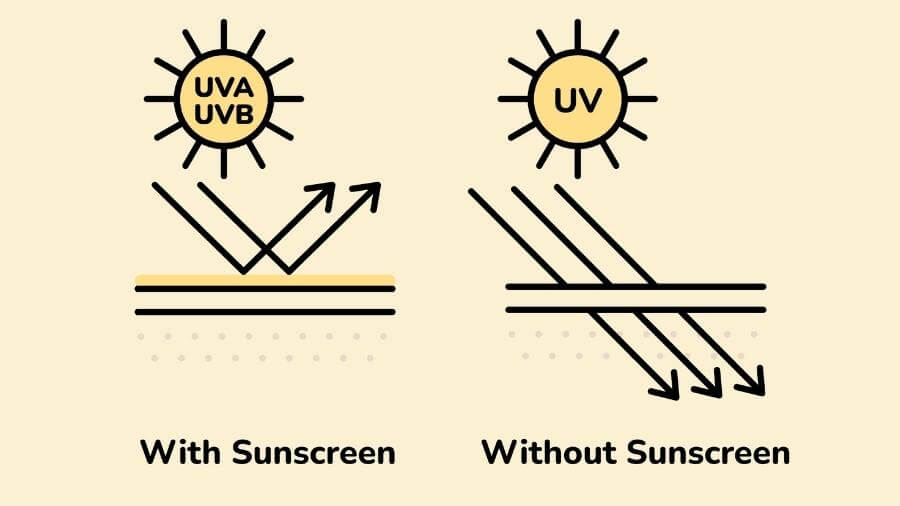 Check Your SPF
Check Your SPF


According to the American Academy of Dermatology, about 1 in 5 Americans will be diagnosed with some form of skin cancer over their lifetime. Sun exposure can be harmful to the skin, accelerating the aging process and leading to the development of more serious skin concerns.
The first line of defense against overexposure to the sun’s rays is sunscreen. But, how can you choose the most effective sunscreen for your needs, and when should you apply sunscreen for optimal benefit?
First, let’s take a look at the types of sun rays. The light from the sun travels in two different types of rays, longer ultraviolet A waves and shorter ultraviolet B waves. The longer UV rays are known as UVA rays; shorter rays are known as UVB rays. Both types commonly cause damage to the skin.
When you forego sunscreen during an afternoon at the beach or pool, you may get a sunburn caused by UVB rays. UVA rays can reach more deeply into the skin, causing damage to cells. Either type of UV rays disrupts the skin’s regeneration and appearance.
Continuous exposure to UV rays puts the aging process into fast motion. Early sun exposure during childhood accelerates something known as the photoaging process, causing visible damage such as the appearance of wrinkles and discoloration.
The skin does have the ability to heal itself. For example, the peeling that occurs with a bad sunburn sheds off skin cells damaged by the sun. However, the skin’s ability to self-repair is diminished. UV damage to the skin and connective tissue increases, which is why wrinkles and lines appear.

While the appearance of wrinkles, fine lines, and dark spots is a nuisance, more serious skin concerns can pose a significant health threat. For example, excessive sun exposure increases your risk for skin cancer, which is the most common form of cancer in the United States.
UV rays damage the DNA or genetic material. All cells grow and divide, but the DNA damage can cause this process to happen in an uncontrolled way, leading to bundles of extra cells that result in either a lesion or a tumor, which can either be malignant or benign.
The best protection against long-term and common occurrences of sun damage includes avoiding direct sun exposure between 10 a.m. and 4 p.m., avoiding tanning beds, and applying sunscreen on a daily basis, not only when you’re at the beach or pool.
The SPF factor of sunscreen relates to the amount of time you can spend in the sun before burning. For example, if you use an SPF factor of 15, it would take 15 times as long to burn as you would without any sunscreen.
These sunscreens protect against both UVA and UVB rays. Sunscreens that are not broad spectrum only provide protection from sunburn because they only provide protection from UVB rays. UVA rays can contribute to both the appearance of lines and wrinkles and more serious skin concerns.

This number relates to the level of UVB protection. SPF 50 filters out about 98% of rays, and SPF 100 filters out about 99%, though no sunscreen provides complete protection. Any sunscreen with an SPF of 15 or lower does not protect from premature aging or serious skin concerns.
Water-resistant sunscreen can last between 40 and 80 minutes when swimming or sweating. It’s best to reapply sunscreen every two hours or even more often when swimming or sweating, as well as when you towel off after swimming.
Sunscreen used past the expiration date loses effectiveness.
To support healthy skin and maintain that youthful glow you’re used to, avoid direct sun exposure between 10 a.m. and 4 p.m. Avoid the use of tanning beds, and be sure to apply sunscreen each day. Look for broad-spectrum formulas with SPF of at least 30, and be sure to apply often and all year round.